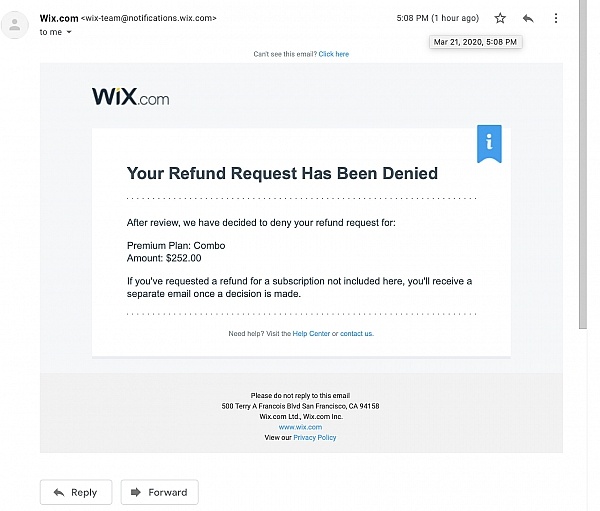
If a graphic contains a caption, the screen readers will notify the user along with the alt text. This text contains information about an image, such its content. For example, a sentence that starts with "Ellen Ochoa", the first Hispanic women in space" would be an example. This sentence is best if it uses "alt=" instead of "image", as the former would have redundant information and the latter would provide no useful information.
Do not put keywords in alt text
Add alt text to images you use on your website. This text should describe the image. It should also include keyphrases or keywords that are related to the content of the image. It helps search engines understand images, so make sure your text is as short and concise as possible. Whenever possible, include relevant keywords in the alt text, but avoid keyword stuffing! Here are some tips to help you add the right keywords in the alt text:
You shouldn't use your alt texts as your main content. It should contain no more keywords than 70%. Avoid phrases like "image of", "image of," or "photo of." If you wish to use more keywords, the longdesc="=" tag is best. You can also use href attributes to provide longer descriptions. Remember not to repeat information from an image. This can confuse crawlers and affect your ranking.
Be descriptive

When writing alt text, it's important to be specific. Think about the image you are writing about. For example, an image showing a baseball field might have text descriptions of a woman optimising her WordPress website for SEO. If the image features a player striking a baseball, the alt text should include information about Fenway Park, the player and the team. Your alt text will become more helpful and meaningful by using the details of the image.
Be descriptive when writing alt texts. Screen readers may recognize the image but they can't describe the content. Alt-text can help. It gives readers the opportunity to interpret the image and provide context for the images. If an image is clearly described, its alt text can be short and sweet. It's important to keep in mind that screen readers may cut off alt text after 125 characters, so make sure to write enough for your image to remain legible to the reader.
Be keyword-rich
If you want your website to appear in the image search on Google, the alt text you use must be keyword-rich. Google only looks for content with keywords. Therefore, if you have a photograph, the alt texts should contain relevant information about that image. It should be descriptive without keyword stuffing, but keyword-rich enough to draw the reader's attention to the image. These best practices can help you create the best alt text.
The alt text for your images describes the photo. The alt text should be keyword-rich and include the main keywords at the start. This will help Google understand the content of your image, which will improve your search engine rankings. Google will notice keywords in alt-tags, and any copy you create. This will increase your website ranking. If your images include keyword-rich alt-text you can ensure that your website appears in search engine results when users are searching for specific keywords.
Keep in touch with the image

Remember to describe the image's content in the alt text. This includes its copyright information and any other information. A brief description of a single image is fine, but a longer sentence will give your audience more information about the image. Also, include the date and hour you took the image. This is necessary to ensure that your photo is found by as many people, as possible.
It is important to remember that alt text should be relevant in the context of your page. You should also include the keyword. Here's an example: A baseball field, a hitter hitting a ball and Red Sox #34 David Ortiz. Because this information will make it easier for people to find your page's image, ensure that the alt text contains these details. You should avoid vague or ambiguous terms. They will confuse search engines crawling through your site.
FAQ
How long does SEO take you to build traffic?
The average time it takes to generate traffic via SEO is 3-4 months. It depends on many variables.
-
Your site's content quality
-
Backlinks
-
Targeted keywords
-
Competitor rankings etc.
SEMrush offers a free trial for those who are new to SEO. The powerful platform allows you to track all aspects of your SEO campaign including competitor research, backlink profile and top pages. You can also view local listings, organic traffic stats and reports.
How Often Should My Site Be Updated?
You can increase your site's rank by updating it regularly. However, it's not always necessary. If you've already created good content, you may not need to update it frequently.
How often should I update the website?
There are several ways to update your website. One method is to use the Content Management System, or CMS. You can edit every aspect of your website from this CMS without ever touching code.
Another option is to install a plugin that automatically updates the website. These plugins can be purchased through WordPress stores, or you can install them yourself.
You can also download free plugins such as Yoast and WPtouch. It is best to experiment with different methods and then decide which method works best.
What are different SEO strategies available?
Different SEO strategies can be used, including search engine optimization (SEO), paid-per-click (PPC), and social media optimization.
With SEO, you optimize content for certain keywords using text formatting, HTML code, and other features.
This ensures that your website appears higher in search result pages.
Social media optimization (SMO), on the other hand, is optimizing your website to be seen on social networks like Twitter, Facebook and Google+.
These help build your brand reputation online, making visitors more likely to visit your site when searching for related topics.
PPC ads can also be found at the top of search results pages. They show relevant products, and services.
Advertisements on Google paid searches are the most popular type of PPC advertising. These ads are expensive but extremely effective.
However, several other forms of PPC advertising are available - including display ads, video ads, and sponsored posts.
How do I start SEO?
SEO can be started in many different ways. It is important to first identify the keywords you wish to rank for. This is called "keyword Research". Next, you need to optimize each web page for those keywords.
Optimizing your website includes creating unique URLs, adding descriptions and meta tags, and linking to other sites. Once optimization is complete, you will need to submit the website to search engines such as Google, Yahoo!, or Bing.
To know if your progress is being made, you will need to keep track.
Statistics
- : You might have read about the time that I used The Content Relaunch to boost my organic traffic by 260.7%: (backlinko.com)
- And 90%+ of these backlinks cite a specific stat from my post: (backlinko.com)
- Which led to a 70.43% boost in search engine traffic compared to the old version of the post: (backlinko.com)
- Sean isn't alone… Blogger James Pearson recently axed hundreds of blog posts from his site… and his organic traffic increased by 30%: (backlinko.com)
- Deleting those 10k pages is one of the main reasons that he improved his site's organic traffic by nearly 90%: (backlinko.com)
External Links
How To
How do I set up my first blog?
It's simple! WordPress is a powerful tool for creating blogs. It is easy to customize the appearance of a blog's appearance by changing the fonts and colors or customizing its layout. You can also use plugins to change the appearance of your website based on visitor activity.
You can download many templates free of charge from WordPress.org. Premium templates cost money. Premium templates can include additional pages, plugins, or advanced security features.
Once you've downloaded your template, you'll need to sign up for a free account with a hosting provider to upload your files and run your blog. Many hosts offer free accounts, but there are often restrictions on how much space you can use, how many domains you can host and how many emails you can send.
You will need separate email addresses if you want to use multiple domain names. Some hosts charge a monthly fee for this service.
A blog hosted online is a great way to start blogging if it's your first time. Many hosts offer unlimited storage space so that your files will not be deleted even if they are accidentally deleted.
Many hosts let you host multiple domains. That means that you can have different websites under the same hosting plan. You don't need multiple email addresses and can manage all your sites through the one interface.
Some hosts include social media sharing buttons on their dashboards, allowing visitors to share posts across the internet quickly and easily.
Most hosting providers provide tools for managing your blog. You can view the performance stats of your website, see how many people visited each post, and compare your traffic with other blogs.
These tools can make managing a blog easier and more effective, so you should look into them before choosing a hosting package.
To sum up:
-
Select a topic that is relevant to your business.
-
Create engaging content;
-
Optimize your site using SEO techniques;
-
Promote your site using social media channels;
-
Monitor your statistics regularly to make changes where necessary;
-
Keep your blog updated regularly, last but not least.
The bottom line is to create great content, promote it effectively and measure its success.